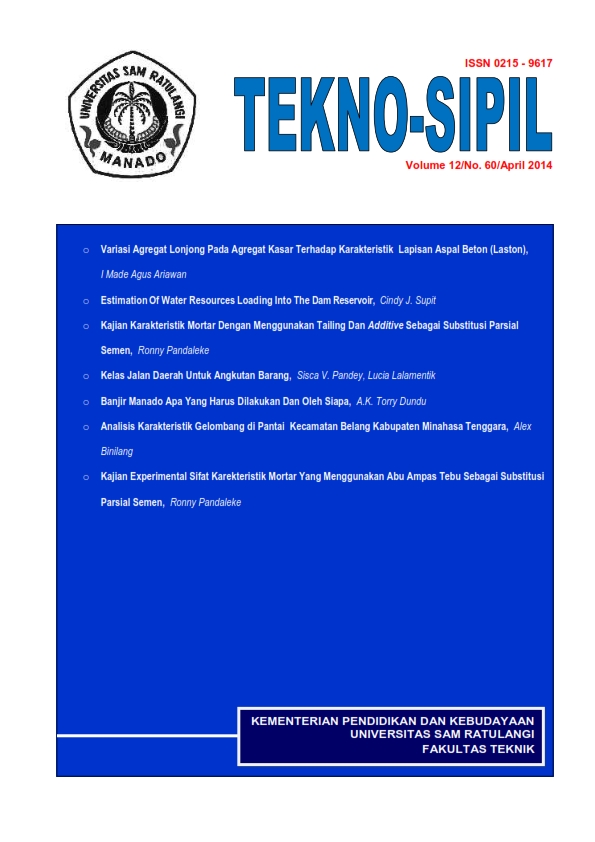ESTIMATION OF WATER RESOURCES LOADING INTO THE DAM RESERVOIR
DOI:
https://doi.org/10.35793/jts.v12i60.5594Abstract
Estimation of water resources loading into the dam reservoir is an important study that will provide a new approach to water environment improvement. The SWAT model simulation between 2000 and 2010 indicated that various potential landuse  sources  exist  within  the  Kase  River  Dam area. Considering  the  total  loading  of pollutants to Kase River Dam, the potential contributions of tributary must be considered. The tributary loadings  are  related  to  landuse  activities  that  occur  in the  watershed,  include agricultural, forest and urban area. The greatest pollutant transport of TN and TP into tributary streams occurs in the Hokuzan Fork area. The Hokuzan Fork area is the big contributor of nutrients to its stream reaches in the Kase River Dam, simply because of its large size (55 % of total watershed area). The transport of nutrients to stream reaches is much lower in the Nakahara Fork area with TN 8319.13 kg and TP 580.75 kg respectively. Subwatersheds 6, 7 and subwatershed 8, which inside the Nakahara Fork contribute relatively little to their respective stream reaches. The outcome shows that the greatest sources of pollutant transport to stream reaches are from Rice field and Forest Mix, which dominate the Kase River Dam watershed. Rice field is seen to contribute significant amounts of all nutrients to stream reaches; this is due to the agricultural activity from this landuse.
Keywords: Water resources, Dam reservoir
